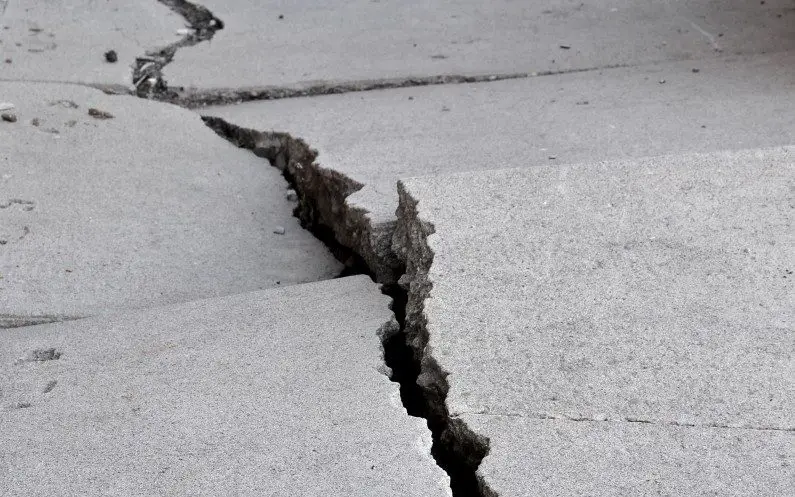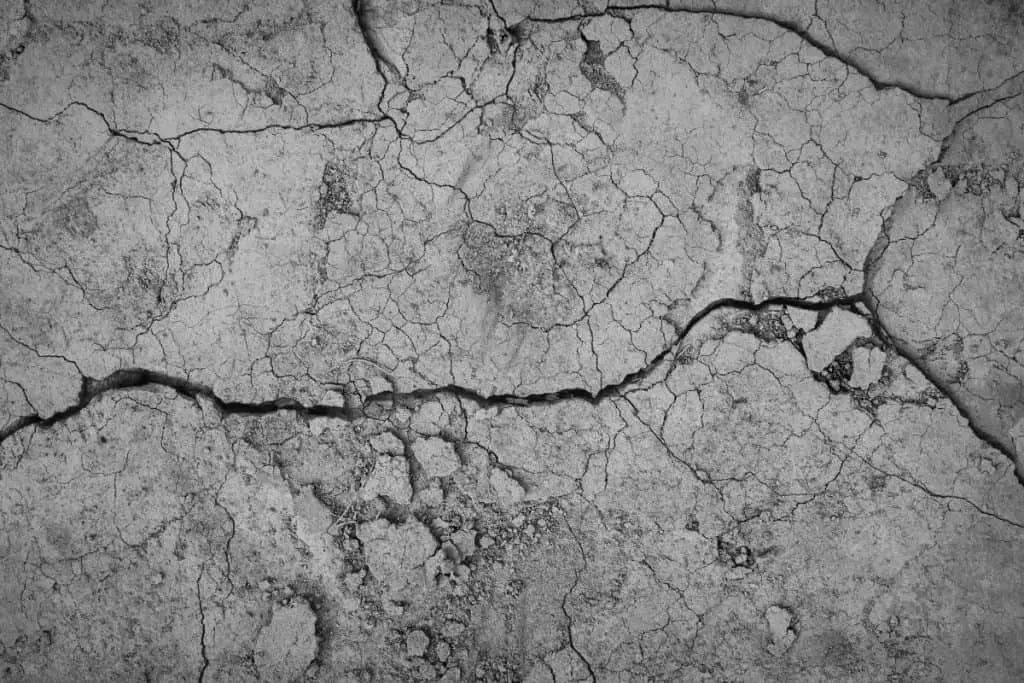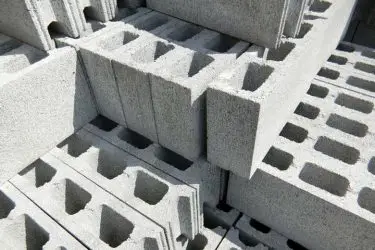Pitted concrete (also called “spalling“) can be a pain in the neck, especially for homeowners or those who work with concrete for a living. Most experts who pour concrete don’t have the problem of pitted concrete when several important factors are taken into account, but many people suffer (sometimes expensively) from mistakes that others made in the past.
There are four common causes for concrete pitting:
- The absorbed water weakens the concrete during freeze/thaw periods.
- If the concrete was mixed incorrectly with the wrong measurements.
- If the curing process was done incorrectly or ignored.
- If the concrete is worn due to old age and overuse.
While there seems to be no way to prevent pitting in concrete that ages over time, there are a few things that you can do if you’re working on a concrete project to at least avoid pitting from happening too soon.

Table of Contents
Freeze-Thaw Cycle
If you live in a cold climate, you might enjoy the cold winters. But you can ask any concrete expert in the area just how annoying the freezing and thawing of concrete can be, especially in garages and driveways.
Concrete is a porous material and tends to absorb liquid such as water. During the colder months, the water will seep into the concrete during the day and then freeze at night. As it freezes, water expands. After years and years of this happening, the concrete slowly (or sometimes quickly) erodes away.

Unfortunately, there is little we can do to prevent this other than move to a warmer climate, which may not always be possible for most people. The pitting that occurs will slowly break apart the concrete and ruin its integrity.
Not every concrete mix was created equally. Some might be stronger and more resistant against the freeze/thaw-cycle than others. Otherwise, you can fix the smaller pitting with epoxy for concrete and a caulking gun. With larger pitting, you may need expert help.
Incorrect Mixing
Impatience can really kill a concrete project and cost a lot more money, time, and headaches later. “Eying” the measurement or simply skipping the measurement process altogether can result in a concrete mix that will crack and pit.
This may not seem like a problem if the pits are small. They can be filled in with epoxy, but if the cracks are large enough, it could cause problems for, say, a foundation of a building.
Not only impatience, but ignorance of the type and proportions of mix you use can also cause pitting in the concrete later on. Your climate matters when it comes to putting the right amount of water to concrete mix together.

Incorrect Curing
After you pour the concrete into its intended form or location, the last step in the process is to cure it. Curing involves keeping the concrete moist so that the chemical reactions in the mixture can yield more strength and durability in the concrete.
The entire curing process can take upwards of a month (28 days) for the concrete to reach its desired compressive strength (psi). This is crucial because if the concrete isn’t cured properly, the concrete will develop pits and severe cracks and will cause you more pain and headaches in the long run.
Read more: Time for Concrete to Cure and Turn White: How long will it take?
Important: Do not skip the curing process!
Old Age And Overuse

Everything gets old. Everything gets used. What matters the most when it comes to concrete is how well it gets maintained. Unfortunately, concrete that is left and ignored for decades will erode and degrade. It’s the way of the world.
If you live in a colder climate, or even any kind of harsh climate, this is especially true. The elements will combine and beat down on the concrete for years. Removing ice with salt or other ice-melting products sparingly can drastically increase the lifespan of your concrete and prevent too much abuse.
You might also consider applying a concrete sealer product to protect it from damage, stains, and corrosion. Sealers block the absorption of water in the concrete pours, thus making them almost waterproof.
All in all, pitted concrete, although can be inevitable in the long run, can be prevented with proper mixing of concrete, curing, and maintenance.



